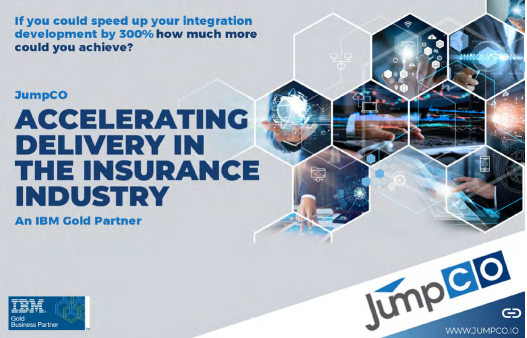
According to Graham Bingham, Director, JumpCO, when you invest in something like an important application, there are costs, but you build an asset and a capability. “Yes, software requires significant investment, but it wouldn’t be happening if it wasn’t adding value out there.”
Tony: Our Insurtech2022 conference highlighted the fact that the insurance industry has expanded its ecosystem significantly, bringing with it new complexities. Most companies are now starting to use external consultants as part of their IT project implementation. I recently had the opportunity to speak to Sanlam about their E-nnuity, and JumpCO’s involvement. Can you give me a bit of your perspective on that project and as a director of JumpCO, how you looked at it from your helicopter view?
Graham: I have played a couple of distinct roles at JumpCO. It has been a privilege to have been there right at the beginning of E-nnuity, to have seen it grow and increasingly add value. One way to describe E-nnuity is to talk about its stakeholders, of which there is quite a variety.
The availability of funds at retirement is essential. Sanlam, through their intermediaries and funds that are acting for those people that are retiring, get to do some powerful ‘what if’ analysis for people like us. E-nnuity helps them answer questions like; “if I need this amount of income, how much of my savings do I need to put into an annuity? Alternatively, “I have this amount of savings and I need such and such an increase, so how many years are my savings going to last?” And that really helps us in planning for that stage of life. E-nnuity adds a lot of value for Sanlam in that way, its intermediaries and at the end of the day for you and me. It was a privilege for JumpCO to be involved.
Tony: As a consultant, one of the important things is obviously evaluating when you bring in a consulting firm and the expense of hiring IT consultants. How has that changed, and how do companies see that in terms of part of the budget of implementing new digital strategies?
Graham: Most companies use consultants and external suppliers as part of their portfolio because they recognise that they do not want to, cannot do everything, or do not have enough resources now to do it. A question that often gets raised is whether its not expensive. We always just tried to say looking at the expense is only half of the equation. When you build something, you build an asset, you build a capability, it takes an investment. And so, you need to look at what you are getting for your investment.
Part of that investment delivers an application, but there are many intangibles that come along with it. Peace of mind, via a service agreement, where Sanlam can call us at any time with a new requirement or with a problem, for innovative ideas. Reliability and quality, these are big returns on investments in the IT world. The use of modern development techniques, such as continuous integration and test-driven development, and so on; we are specialists and we can bring those to the table, which are intangibles for the asset.
Our teams also have experience in a wide variety of industries, which is not always easy for companies to build themselves.
Tony: Possibly a similar argument with other software purchases. You guys work with IBM quite closely, how does that work?
Graham: Yes, a similar argument. We are IBM partners and many of our own customers have chosen IBM solutions. Especially because of these kinds of tangible and intangible value adds that they bring over the years. We have gotten to know their products and helped our customers implement them, with best practice advice on using them.
IBM solutions are known to be very robust, innovative, and very scalable. In the E-nnuity case, for example, we use a couple of IBM products. There is the IBM cloud product, where all the source code for the application sits, making it incredibly secure, but it also makes it super easy to collaborate with the Sanlam teams and implement new versions of the application. So, whenever there is an update, it is done in an effective way.
The underlying data is also kept in an IBM database. The application itself is stored in an IBM application server. These are hard to beat for reliability, security, and scalability. And whenever you are dealing with personal data insurance and tech type solutions, those are important criteria. So, I think with IBM there is a lot of bang for your buck as it were.
Tony: A lot of what you do is to try and add extra value, obviously by looking at what other platforms to integrate and what tools to use best, as you did in the case of the E-nnuity. How do you measure value add, and as you say, bang for buck?
Graham: Value add is super important, in a way, it is what makes the world go around. As suppliers we do something, and we hope that we are not just a grudge purchase but that we are a means of adding value for our customers. Our customers are themselves in the business of adding value. IBM is in the business of adding value and they know it. Yes, software requires a big investment, but it would not happen if it were not adding some value out there. Even, every single entrepreneur that has built their brokerage know that they are adding value. Sanlam knows it. In one way you could look at it like this; these individuals, companies and suppliers are meeting the needs of the world by each adding value in their own unique way.
Tony: As a consultant you must get to know a variety of different systems. How do you keep up with the speed at which new things are coming out, and how new tools are becoming available that you could share with potential clients?
Graham: Excellent point. Technology in general continues to change at a remarkably high rate. One way of answering: we love tech, and our team members are constantly playing with things as well as pursuing formal research and development objectives. Sometimes in the case of our partnerships with companies like IBM, they will be leading. Sometimes that lead comes from open-source community, or from general trends in the industry. So, it can happen for a variety of reasons.
Tony: In a follow up session I would love to expand a bit on managing relationships when you are working on a project between the consultancy and the internal people.
Graham: Relationship is essential as there can be tension. You want trust, but you also want delivery. So, we need both of those for a successful relationship and yes, that would be a fun discussion to have.


